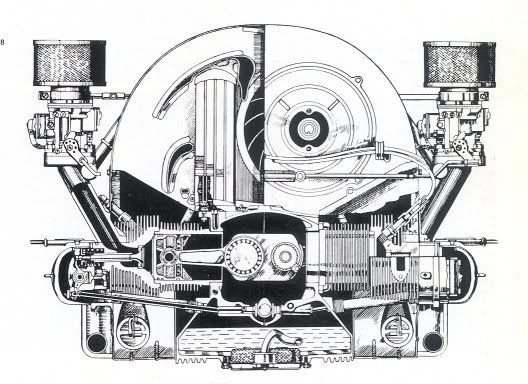
Above: The 1300cc / 1500cc Super Porsche engine with roller crank, and Solex single barrels
From the 1300cc Normal in 1951 to the 1600 Super 90 in 1964, Porsche used a 74mm stroke. Piston bore sizes changed, from 74mm (not a typo, 74mm just like the stroke) for the 1300, to 80mm in the 1500's, to 82.5mm for the 1600's.
The only exception from 1951 to 1964 was the 4-cam (Type 547) "Carrera" engine, which in the 1500cc version, had 85mm pistons, and 87.5mm for the 1600, but both used a short 66mm stroke for a 7000 RPM+ redline.
This brings us to the VW engine, and it's use of the 69mm stroke for the 1300/1500/1600 engines. Porsche had opted for the "longer" 74mm stroke (in relation to the bore) for extra torque over a shorter, higher RPM stroke.
The Porsche factory intended for their pushrod engine to live within its 5500 rpm to 6000 rpm range, and sporting intentions considered, a low-stress engine.
We're rebuilding our recently broken 1600 vintage race engine with a 74mm crank. In that this is a racing engine and not a street engine, we have AJ Sims heads with 40x35 valves. The Porsche 912 (which carried on an evolved Super 90 engine) had 40x34 valves for about 102 SAE HP at 6000 RPM.
The point of building an 85.5x74 is to keep within the spirit of the era and under 2-litre vintage class we represent. We're using an Engle 120 cam, 1.25 rockers, and a 1.5-inch 4-into-1 exhaust. The dry-sump case is heavy aluminum alloy, very strong.
Can anyone make an argument against this parts combo, or share any 74mm stroke story's? Cam suggestion?
Remember, engine width is not important nor is the use of use of heater boxes
Thanks,
FJC